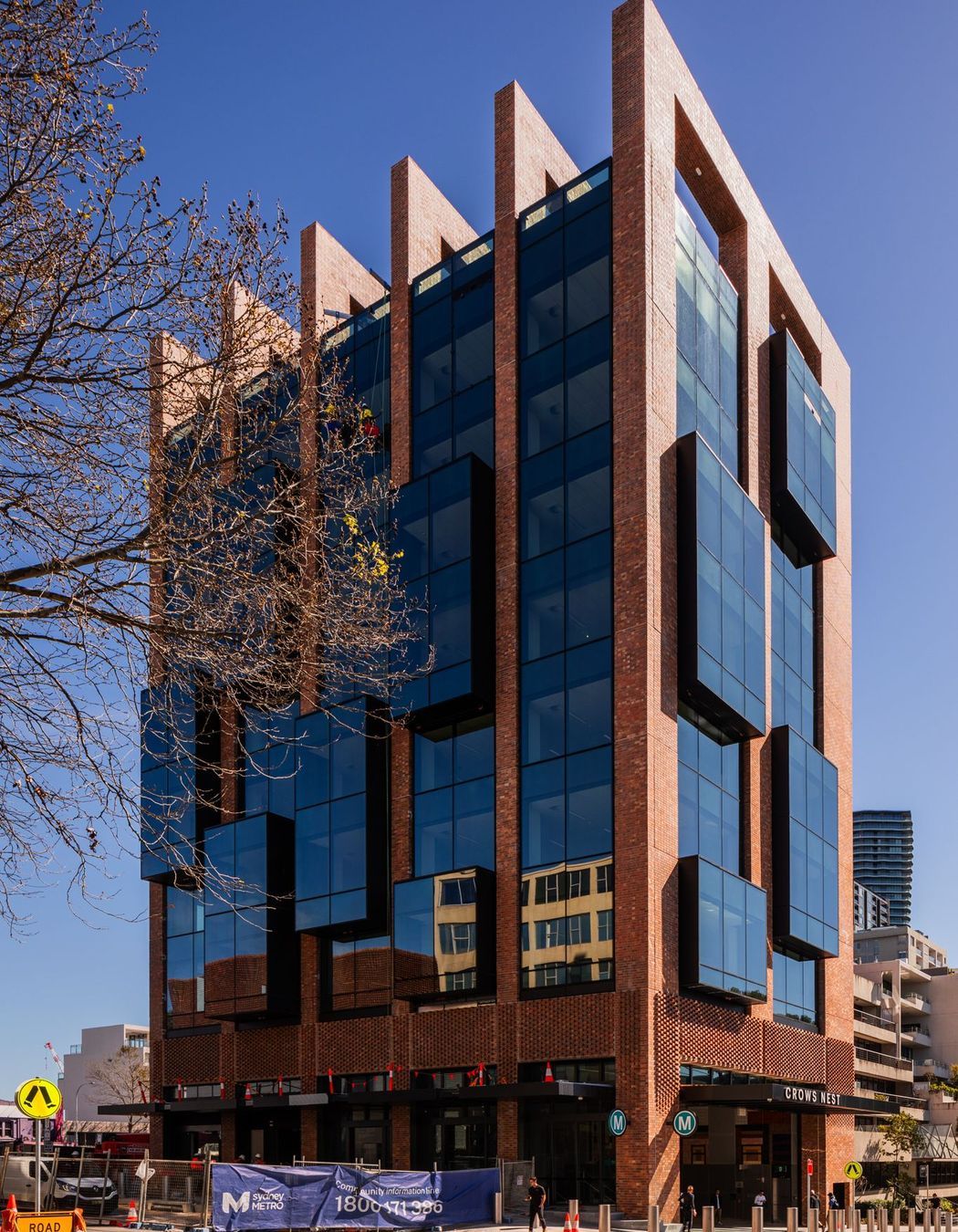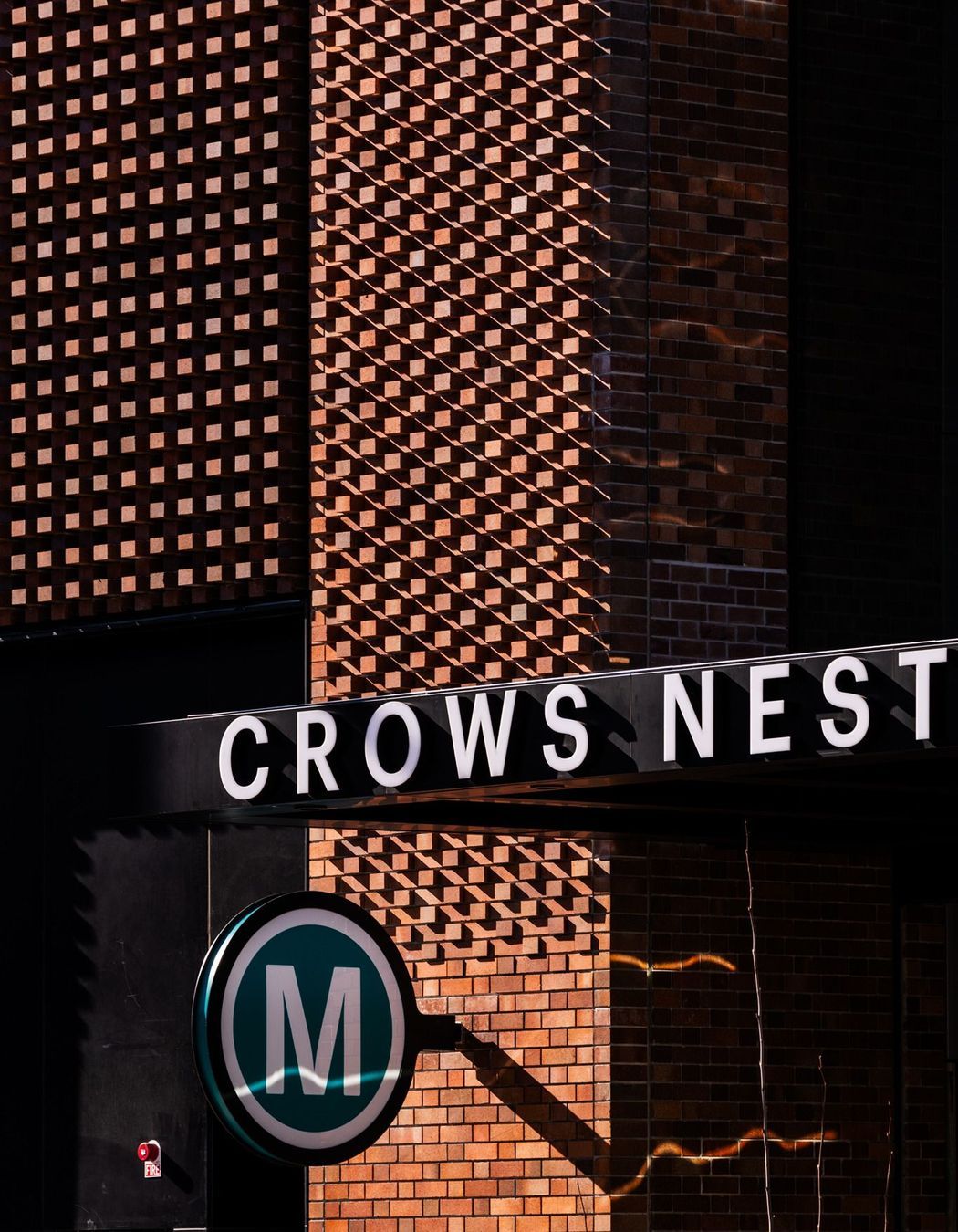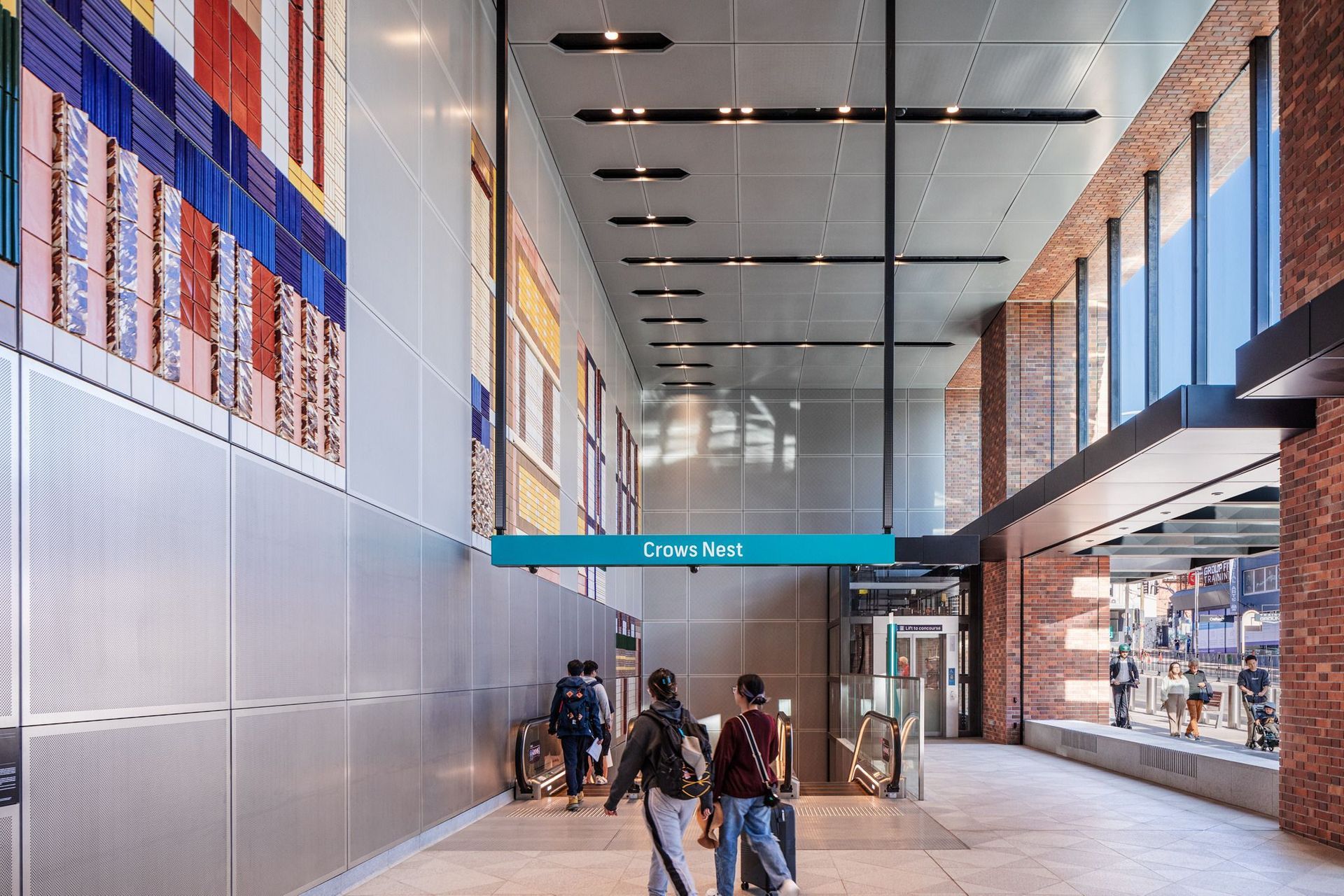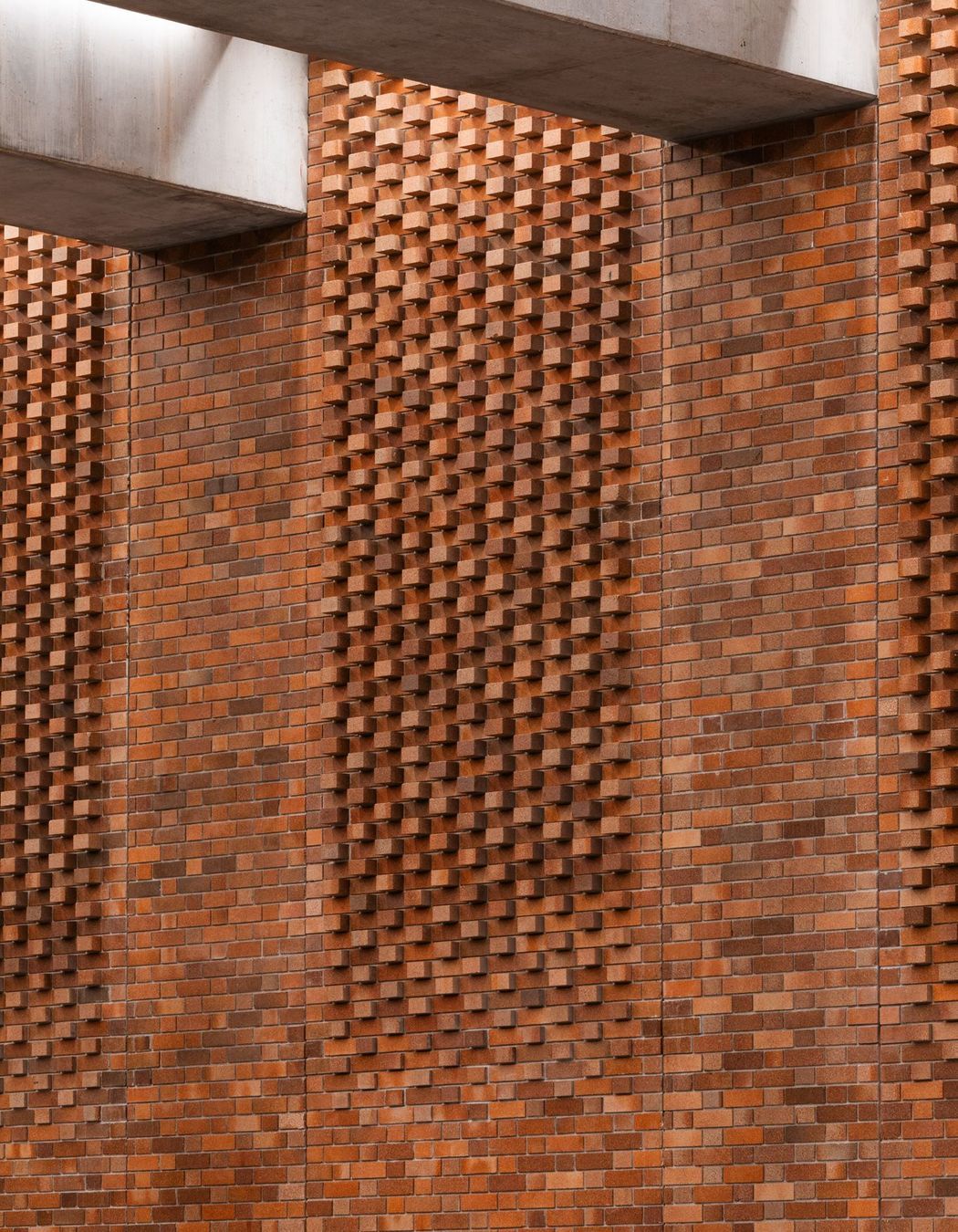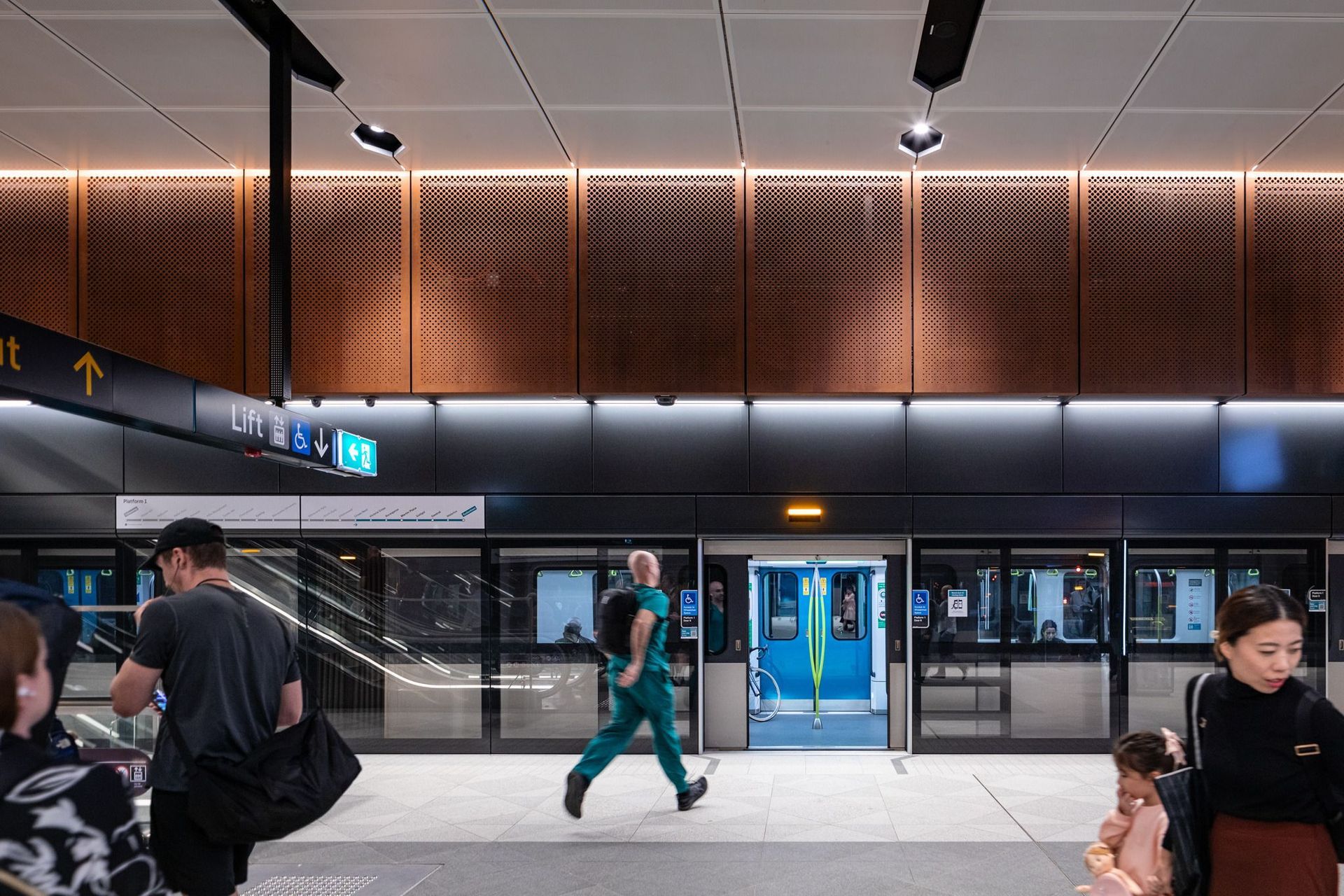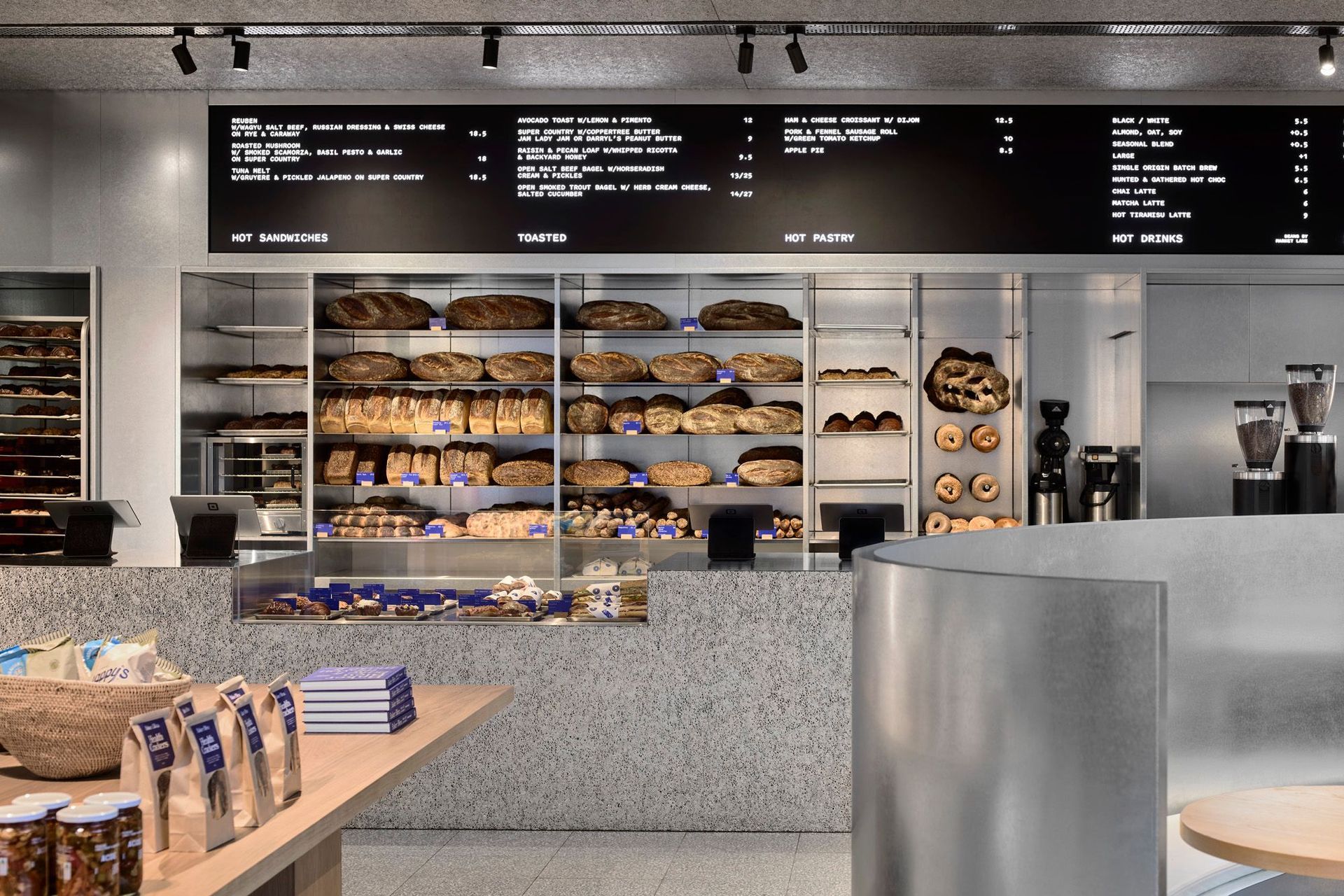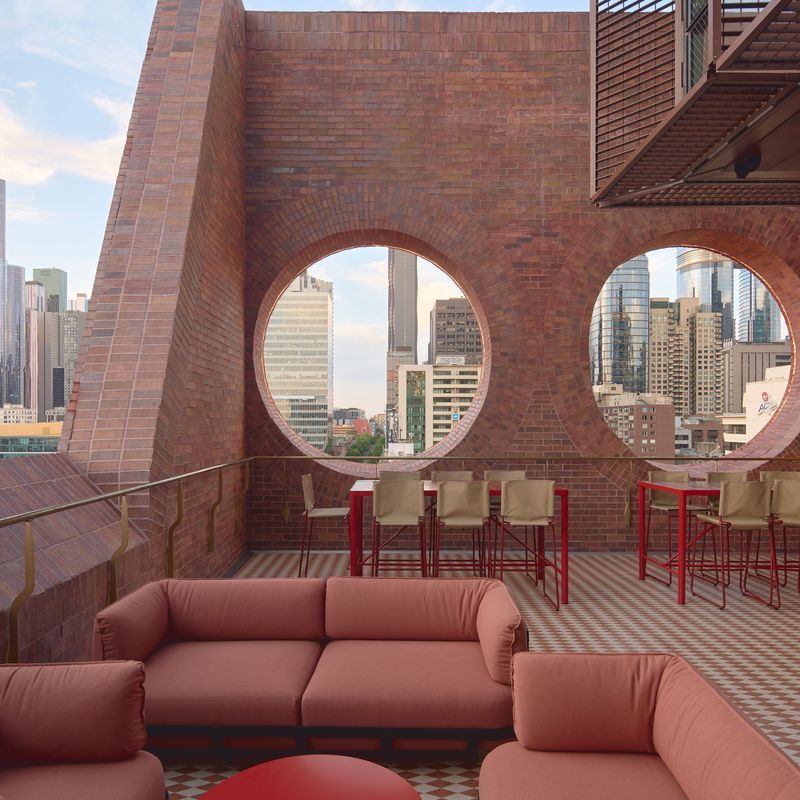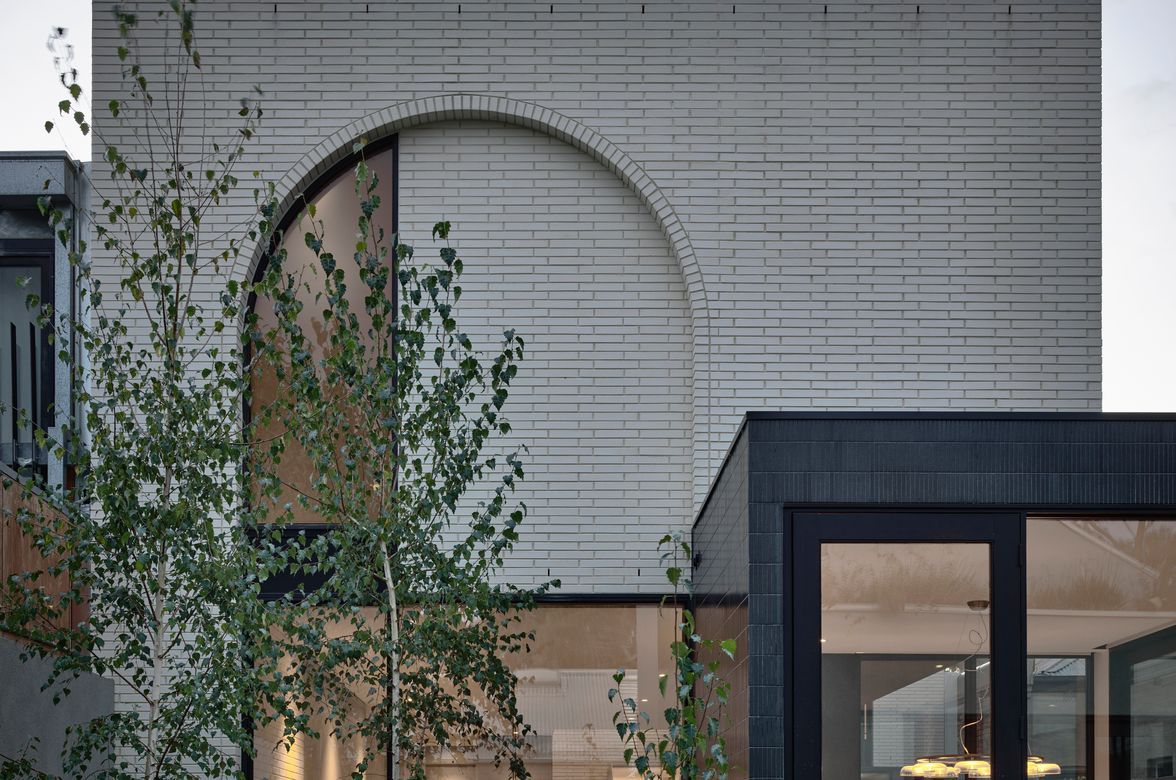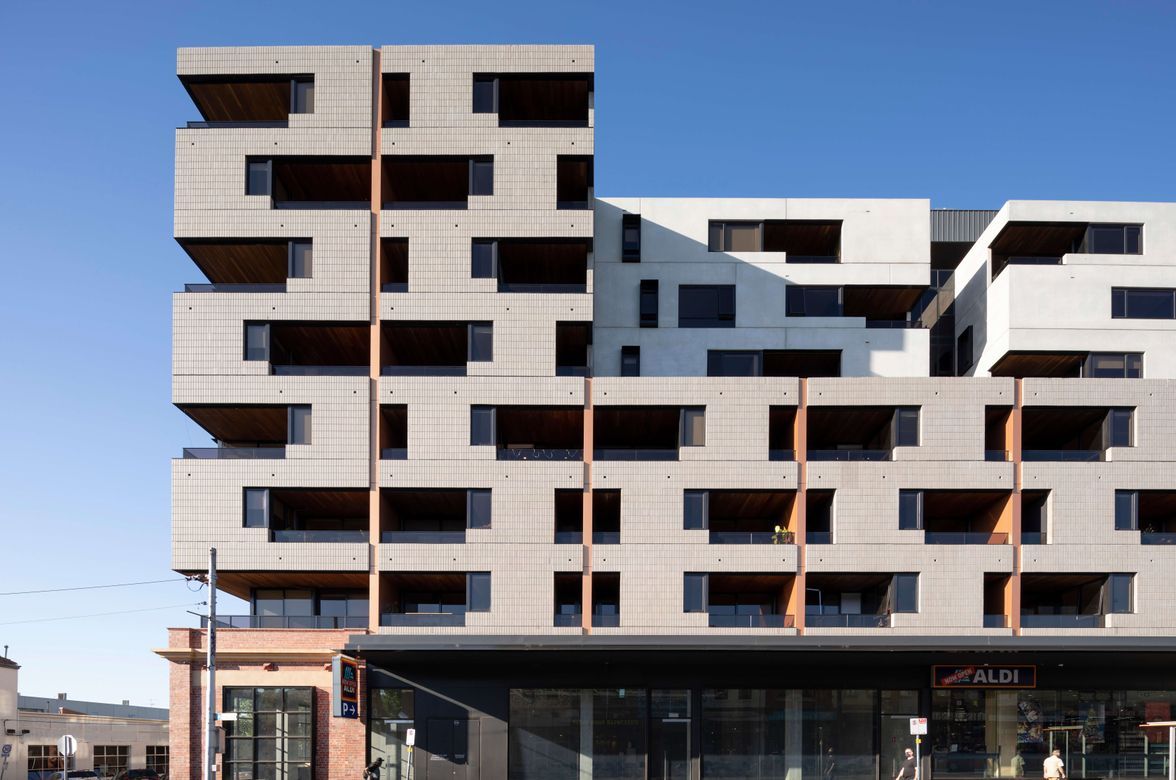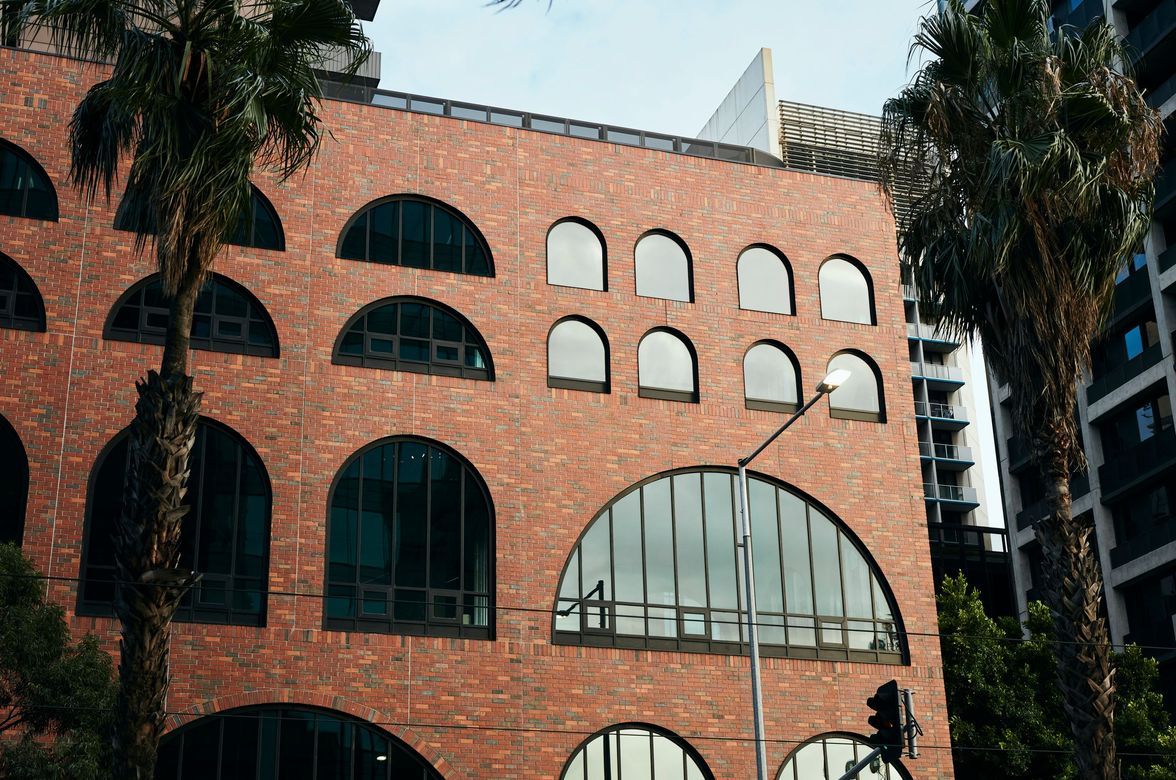Crows Nest Station’s Brick Inlay façade seamlessly intersects infrastructure with community
Creating a piece of architecture that over 10,000 people are going to use every day makes for an incredibly special project. That was the great fortune enjoyed by Woods Bagots’ Principal, Lucian Gormley, and Senior Associate, Anthony Chow, in designing Sydney Metro Crows Nest Station.
Located in the heart of Crows Nest Village on the Pacific Highway, from the outset the team’s incredible design focus was intersecting infrastructure and community. One of the smaller of the Sydney Metro Stations, Crows Nest is neatly compact, its well-resolved design focusing on human, residential-scale elements and simple external architecture to seamlessly weave large-scale infrastructure into the local community.
For this alone, the Woods Bagot team is to be congratulated.
Crows Nest Station is surrounded by low-rise, detached and semi-detached housing with a distinct village atmosphere. Yet infrastructure is typically delivered at a completely different scale to historic residential communities, like Crows Nest, involving much larger profiles that are craned into place, and not as fine grained or legible at a human scale.
So, hitting the mark in terms of context and scale needed deep thought, and as Lucian says the Woods Bagot team, “worked hard to find solutions that responded to the requirement of infrastructure whilst speaking to the historic, village scale, residential aspects of the site.”
Given the area’s range of beautiful brick civic and public buildings, brick is the predominant material referencing and speaking well to the scale of the community. Crows Nest Station’s modulated brickwork façade of Namoi Valley Coolibah Cream bricks grounds the building within the local community. The brick’s earthy richness connects the station to place, while its pale colour beautifully takes on the shadows and tone when the light hits it.
“Crows Nest station, in particular, was really trying to search for a module that a person can interact with, and that's what the bricks are all about, which is rare. You don't see it too much anymore in infrastructure,” Lucian continues.
And it’s how the bricks are used that makes this design a standout.
Offering more than aesthetic value, the modulated facade saw bricks used in two ways to overcome multiple design challenges.
Firstly, precast brick panels were constructed using Brick Inlay, for both the street-facing façade and inside on the concourse, to meet durability and security requirements, and achieve the speed of construction needed for infrastructure projects. This saw roughly 15-20 panels being installed per week, which is more time efficient than the typical few months needed for bricks to be laid traditionally.
But Crows Nest was not a straightforward brick façade design.
In the Brick Inlay panels, some of the bricks sit cantilevered at 85mm in a Flemish Bond. “The idea of the cantilevered bricks was really interesting because it almost gave two different readings to the built form. When you see the facade obliquely, you just see the faces of these bricks and it really softens and lightens the skin as you look down the street. But then when you come front on, the built form looks more solid, civic and significant. So by corbelling these bricks as cantilevered modules, the material scale is almost moving and adjusting, becoming more human-friendly and approachable the closer you get,” Lucian adds.
Creating the design is one thing, but realising it takes a team effort, along with skill and experience in knowing what can and can’t be achieved to deliver a robust solution.
The team at Robertson Façade Systems worked closely with Architectural Form Liners Australia, performing a number of trials to develop a solution, and Evolution Precast manufactured the panels:
“It’s immensely rewarding to work on challenging projects and find solutions. All panels were in Flemish Bond and at higher levels, the head of the bond started protruding at 5mm increments to the full 85mm protrusion. AFA was outstanding in its speed and support of the trialling process and Namoi Valley Brickworks accommodated our need for some special production. We had a system that worked and the team at Evolution did a brilliant job with the care and attention that they are renowned for,” says Peter Robertson, Director of Robertson Façade Systems.
Once the custom Brick Inlay moulds were created and the cantilevered panels were successfully made, one of the biggest challenges for the architects to get their heads around was the thought of having “1000 bricks all sticking out at 85mm, transporting that product and installing it, when some of those panels are eight to ten tonnes.”
The expertise and experience of the team at Robertson Facades Systems, along with Architectural Formliners Australia and Evolution Precast, delivered a thorough and systematic approach to the challenge, and a highly successful result:
“During the 25 years we have been providing a system to embed thin brick in precast concrete this was the most challenging project. We cut and prepared and blended the brick, developed the formliner and protrusion system, planned the formliner to suit all the panel sizes and trained the team at Evolution to use it. When you look at the structure today we all have a great deal of pride in making this work,” Peter remarks.
Using Brick Inlay not only ticked many technical boxes but also helped Woods Bagot realise its human, residential-scale solution:
“We arrived at the solution reasonably quickly actually. We’d been studying the local area and thinking about the relationship between community, locality and infrastructure and realised that their intersection was the project. Hooking bricks into the precast was the architectural expression of that relationship via the module in a way: the brick unit that you could hold became the precast module that you could assemble with and then that became the overall building. So it came together really well in that way,” Lucian explains.
Quality control was Brick Inlay’s other massive advantage – being able to have the Brick Inlay panels checked in the factory, offsite, before installation: “That is powerful, as opposed to someone over a long period of time installing something and then having to go out all the time and QA it, it just arrives onsite and it's done. That’s a significant advantage, particularly for this sort of infrastructure delivery moving forward.”
The second design challenge for the street-facing façade was devising a solution that allowed the significant mechanical ventilation needs of a metro station to function on top of the building behind a seamless brick skin.
“We had to come up with a solution that would allow air to pass through the building skin but we were taken with the simplicity and confidence of the brickwork as an overall solution. We ended up coming up with a lightweight brick column design which reads seamlessly with the overall solidity of Flemish bond pattern but allows approximately fifty percent of the façade to be ventilated,” Lucian says.
The solution was using brick louvers or brick sticks and, at times, alternating them with the solid Brick Inlay panel. This involved threading the Coolibah Cream bricks, which had been fully set and grouted, onto a steel rod to create hit and miss brick columns that allowed air to escape from the station. It’s a functional and aesthetic design masterpiece.
The idea of infrastructure and community intersecting continues inside the station. From the street entrance a metallic atrium is brought to life with Esther Stewart’s fabulous artwork of handmade coloured glazed tiles, then down on the concourse, enormous beams of precast concrete weave between the more lighter-feeling brickwork panels, creating a beautiful contrast, and a seamless material connection between outside and inside.
Reflecting on the outcome, Lucian and Anthony both agree on the feature of which they are most proud:
“We love the contrast between the concrete beams and the brickwork in the concourse. The brickwork sets off the metallic finishes and the concrete, then down on the platform the warmth of exposed Corten cladding used at a high level references train infrastructure and brings the warmth of the brickwork down to the platform level,” Anthony says.
Lucian agrees, and adds, “It was always about the intersection of infrastructure and community. We wanted to seat the building softly in the community, but we didn't want to hide that it was a significant piece of major infrastructure and when you see the weave of the concrete and the bricks coming together in the concourse, for me that’s my favourite part”.
While it all looks incredible, learning of the technicalities behind the design makes it even more amazing. For instance, some of the concrete beams weigh 65 tonnes each, making the job of installing them one of the biggest lifts AW Edwards has ever done on an installation. Incredibly, the concrete beams were installed to a 20mm tolerance between the Brick Inlay panels. Anthony was at the site for some of the installation recalling, “they had those eight tonne precast brick panels and they put a 65 tonne beam spanning 28 meters straight through into it, with only 20mm on either side. And they didn't even set them out in sequence; or even run the sequence from the wall. So it was a pretty amazing bit of construction sequencing to make that happen.”
Sydney Metro Crows Nest Station really is a significant piece of quality architecture and transport infrastructure of which Woods Bagot and Sydney Metro should be incredibly proud. It has taken three years and a construction team of more than 5300 people to deliver,...
